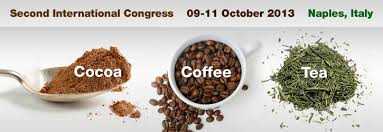Ferreira T. S1. Farah A13. Oliveira E.M.M2. 1 Graduate Program in Food Science, Institute of Chemistry, Federal University of Rio de Janeiro, Rio de Janeiro, Brazil.2 Molecular Diagnostic Laboratory, EMBRAPA Agrobusiness, Rio de Janeiro, Brazil.3 Coffee Research Core Prof Luiz Carlos Trugo, Laboratory of Food Chemistry and Bioactivity, Institute of Nutrition, Federal University of Rio de Janeiro, Rio de Janeiro, Brazil.E-mail: edna.oliveira@embrapa.br
Food authenticity is presently a subject of great concern to food authorities. In the last years, several methods based on polymerase chain reaction (PCR) have been proposed as useful means for identification of food species, allergens and genetically modified organisms (GMO), among other purposes, due to their high specificity and sensitivity, as well as rapid processing time.
Coffee is one of the most popular drinks across the world. As such, it has been a target of fraudulent admixtures with a diversity of cheaper materials, for example roasted barley, corn, soybean and rice.
Nevertheless, the detection of such foods in roasted coffee may present difficulties due to the intense thermal processing coffee undergoes during roasting.
In order to ensure the purity of coffee, highly sensitive and selective methodologies for detection of adulterants must be developed, being DNA analysis a promising tool for this purpose. The objective of this study was to use a real-time PCR based method to evaluate the authenticity of South American commercial coffees.
Twenty one commercial ground roast and instant coffee samples were purchased in different stores located in South American countries. From these samples, 9 were classified as gourmet or superior and 12 were traditional (cheaper) from which 3 were instant coffees. Additionally, 6 Coffea arabica and 4 Coffea canephora samples were used as controls. DNA extractions were performed using a modified version of DNeasy kit protocol and CTAB buffer.
DNA concentrations were determined by spectrophotometry (Shimadzu UV-1800 Japan) at 260 nm. Primers used were CEVADA3, ZEINA2 and ARROZ1 for barley, corn and rice respectively [2]. The reaction was conducted using qPCR (SDS ABI Prism 7000 – Applied Biosystems USA), with SYBR Green I system (Applied Biosystems, UK), in quadruplicate. In order to estimate the adulterants percentage in commercial coffee samples, the equation obtained after construction of a standard curve for each adulterant was used.
The limits of detection of barley, corn and rice DNA were 5,0pg; 0,1pg and 0,9 pg respectively, while the limits of quantification were 8,1pg; 0,3pg and 2,6pg respectively. As expected, barley, corn and rice were not detected in any of the control samples nor in any of the gourmets and superior commercial samples. On the other hand, barley was detected in all 12 traditional (cheapest) evaluated coffee samples, with percentages varying from 1% to 2,5% in ground-roast coffees and 2,3% to 4.8% in instant coffees. Corn was identified in one traditional sample (in addition to barley), with amounts bellow the limit of quantification. Real-Time PCR showed to be an effective tool for adulterants detection in ground roast and instant coffee.
References
[1] Mafra, I. et al. Food authentication by PCR-based methods. Eur Food Res Technol. 2008, 227, 649–665.
[2] Ferreira, T. S. et al. Development of Primer Sets for Detection of Corn and Barley in Roasted Coffee by Real Time PCR. In:24th ICCS, Association for the Science and Information on Coffee (ASIC), San Rosé, Costa Rica, 2012, in press.










